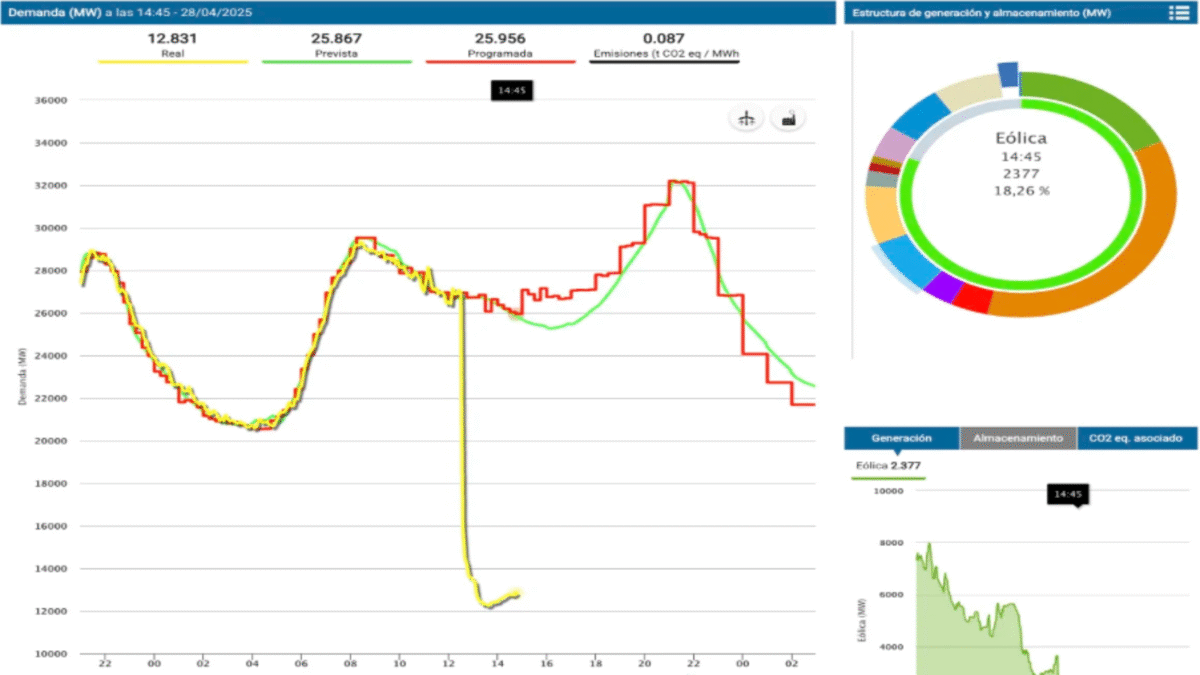In this guest blog Tim Benson, Chair of Powerful Thinking, explains the technical reasons for the dramatic power outage this April in Spain and Portugal and although there is still no definitive explanation for why it occurred, he shares possible reasons and his view on the most likely cause.
The chaos caused by the unplanned grid power outage on Monday 28th April across large swathes of Spain and Portugal was a stark reminder of just how for granted we take having an always on mains supply. Airports, ports and roads had to close, trains came to an abrupt halt, hospitals and data centres had to move to generator power and fibre and cellular networks failed causing huge communications problems.

Had it not been for some timely emergency imports from France and Morocco’s power networks, the chaos could have continued for far longer. For those nay-sayers who are dismissive of the important role that interconnectors (imports from other countries) can play in a country’s energy resilience, this is a stark reminder of how useful they can be. As I write this, 18.1% of the National Grid’s energy mix is being supplied by overseas imports from Belgium, Denmark, France, the Netherlands and Norway.
The scale of this outage was staggering. According to Red Electrica, Spain’s state electricity network operator, in the space of only five seconds from 12.33pm, there occurred a demand drop of over 60% in Spain, with the anticipated demand of circa 27MW plummeting to just over 12MW actual.
There is still no definitive explanation for what caused this blackout, although several possible scenarios have been proffered, which I will come to shortly. However, according to Red Electrica, the technical cause appears to have been ‘a very strong oscillation’ in the network, causing voltage and frequency synchronisation issues which lead to Spain’s grid disconnecting from the European system’. It would appear that there were two separate disconnection events which took place quite close together and, whilst the network was able to recover from the first one, the second triggered this massive power outage.
Unsurprisingly in these uncertain political times, one of the first explanations that was offered was that this was a targeted cyberattack, but the Portuguese Government have apparently since ruled this out.
More worryingly were those that pointed at Red Electrica’s high reliance on renewables as a potential cause. The data shows that, five minutes before the second disconnection event, 60% of Spain’s energy was being supplied by solar and this follows a landmark day on the 16th of April 2025 where renewables (wind and solar) supplied all of Spain’s energy for the first time. Unlike more traditional power generation systems like gas or coal fired power stations where inertia acts as a kind of buffer against anomalous grid disturbances, renewables can leave networks more prone to these kinds of oscillations.
As things stand, the most likely explanation suggested thus far is a phenomenon known as induced atmospheric vibration. Here extreme weather events, particularly those that lead to dramatic temperature variations, can cause frequency and voltage oscillations in high-voltage lines, leading to synchronisation issues, grid instability and subsequent network disconnections. The unusually high temperatures for this time of year, even by Spain’s standards, are therefore very probably the main cause of this powercut but this remains unconfirmed for now.
If this is the case, then it paints a potentially bleak future for national power infrastructure globally. With temperatures rising sharply year-on-year and extreme weather events almost becoming the norm, are we going to see more nationwide blackouts of this sort? We are more accustomed to incidents such as overhead power lines coming down in strong winds and these kinds of incidents can be more easily planned for and mitigated. However, where the weather is actually fighting against the physics of energy transmission, solutions are going to be harder to find.
This article originally appeared in our April 2025 Vision for Sustainable Events newsletter. Sign up to receive monthly event sustainability news, case studies and guest blogs direct to your inbox.

